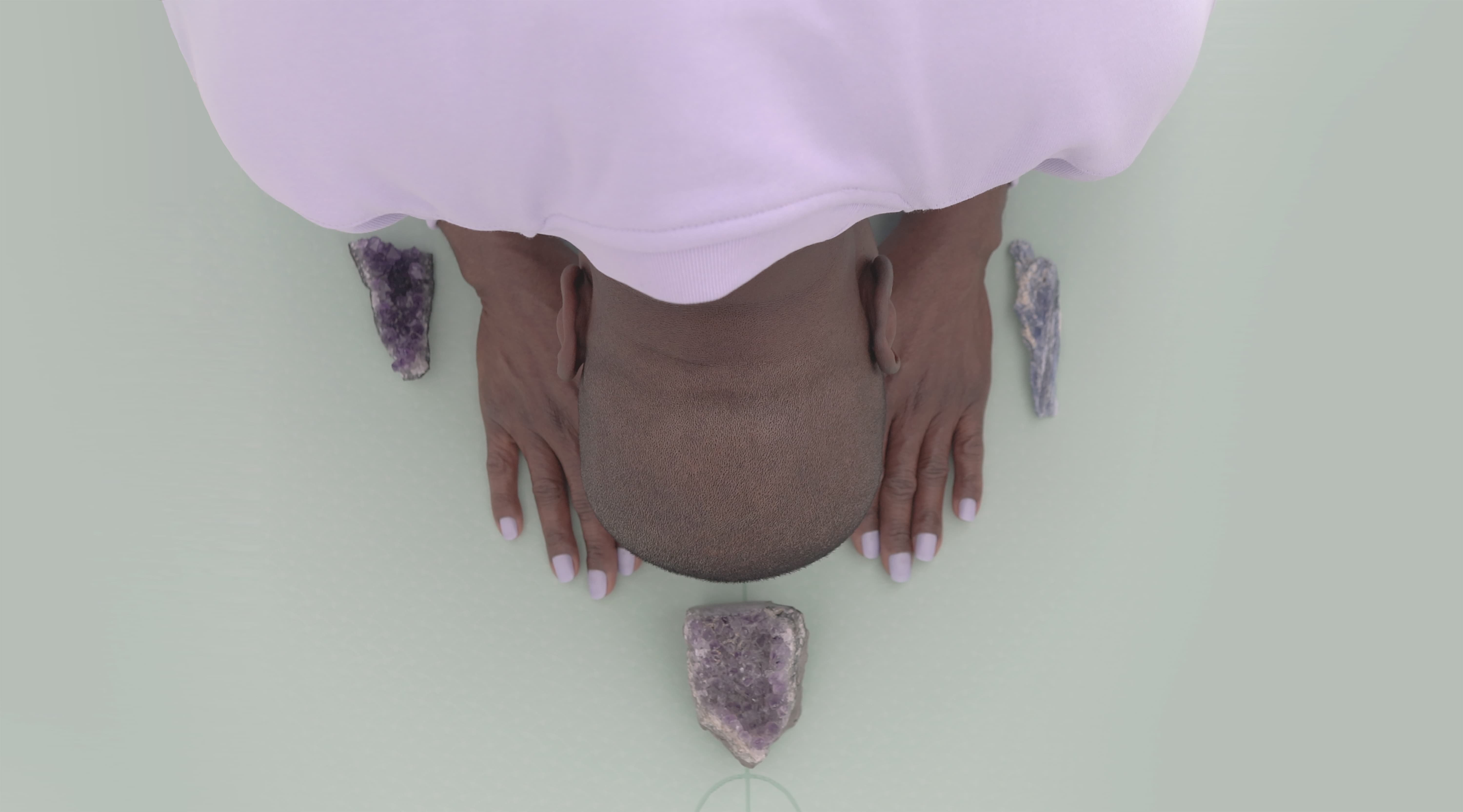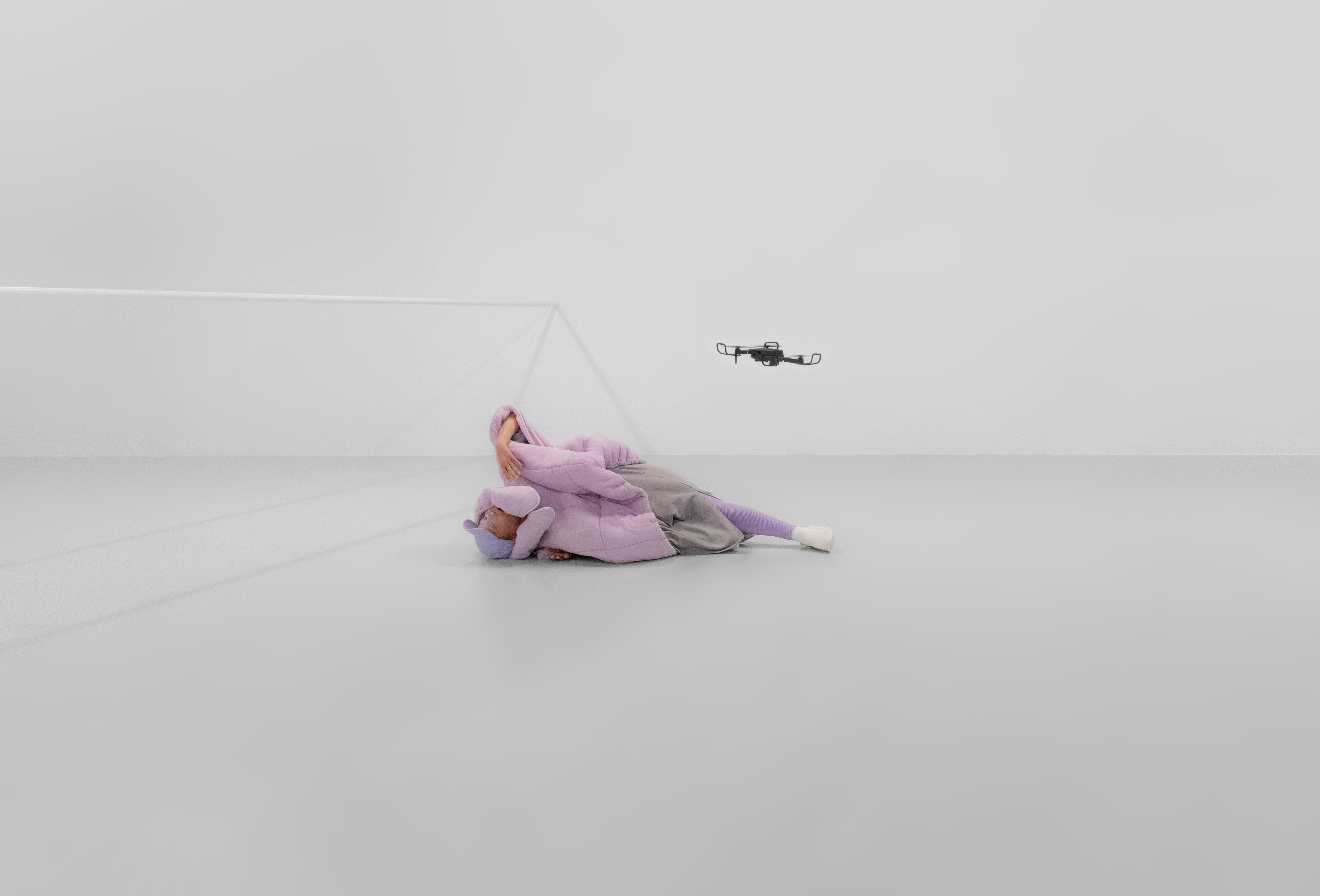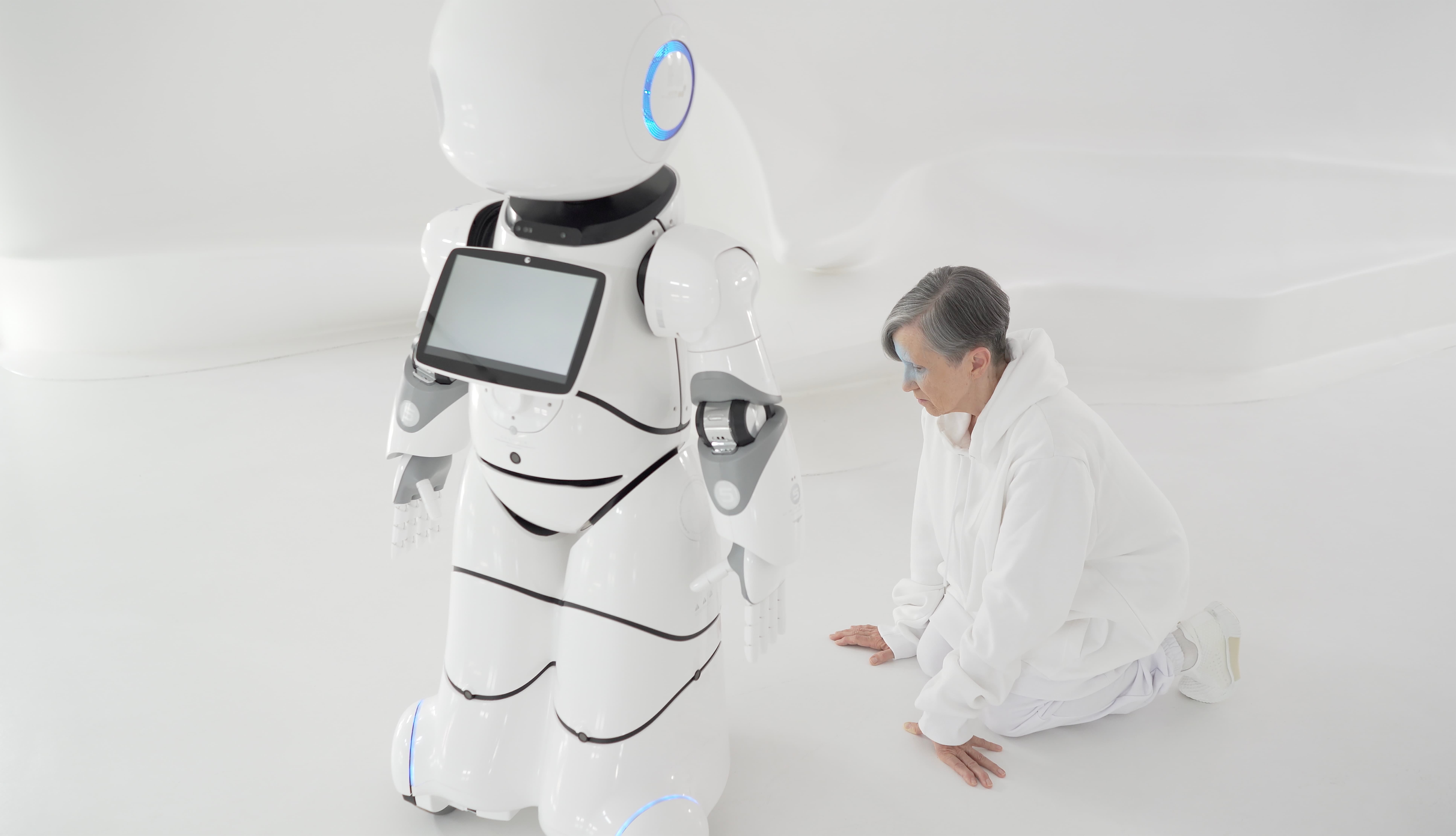
- Date
- 20 DECEMBER 2023
- Author
- LUCIA MARINELLI
- Image by
- MIT BORRÁS
- Categories
- Next in
Beyond Transhumanism: A Conversation With Mit Borrás
In today's art world, Mit Borrás stands out, bringing more than just pastel hues and minimalistic designs. His aesthetic is imbued with a thought-provoking depth, where every artistic choice carries an authentic philosophic meaning. As a visual artist, Borrás is dedicated to genuine research on the intricate relationship between nature and technology, humans and machines. Under his visionary lens, these apparent opposites meld together, sparking communication and inspiring new questions about ourselves and the world. Join us for an exclusive interview as we delve deeper into the mind of this innovative artist.
Let’s start with some casual questions to break the ice and let our audience get to know you better! Can you share a bit about who you are, where you're from, and if you had to pick three objects to describe yourself, what would they be?
I'm a visual, transdisciplinary artist with a passion for transhumanism, botany, biomechanics, and science. My work explores the intersections of postmodernity's rites and devices, such as technological progress, spirituality, and nature. I find joy in reflecting on self-perception and creating pieces that sublimate this idea. Currently based between Madrid and Berlin, I initially started and developed my professional career in Berlin.
As for three elements that represent me: mycelium or a botanical element, an ergonomic silicone massage device, and a prosthesis.
What is your artistic background, and how did you discover your artistic talent?
I've always felt a calling to observe, synthesize, and sublimate what I see. From my childhood, I knew I was destined to be an artist, influenced greatly by early curiosities in robotics, anthropology, botany, ergonomics, and prosthetics/medical studies. I wasn't the typical child, as you can imagine, and today, my studio reflects this—resembling both an operating room and a technological limbo, much like my exhibitions.
As a professional artist, a pivotal moment occurred during one of my trips to create the Adaptasi Cycle when I visited an active volcano in Indonesia. This extreme experience left an indelible mark on my career.


What is your first memory related to you creating art?
Since I can remember, I've been a child and teenager with a decadent and romantic soul in the sinister and twisted sense of Edmund Burke. My creative spark ignited through books on Norse myths and monsters, featuring Dantesque fantasy creatures merging with the forests. Early influences like grunge, electronic, post-punk, and techno punk music, coupled with new flesh cinema, Japanese cyberpunk horror, and science fiction, fueled my compulsion to create, portraying my time. My first vivid memory traces back to when I was 5 or 6, drawing illustrations from medical anatomy books at home. This association of both languages – the body as a machine defined by medicine and music – has been etched into my creative process.
Your production revolves around a dialectic between nature and technology, evident in Adaptasi Cycle. Why is it important for your art to represent the dialogue between these two realms?
This dialectic precisely captures the spirit of our time or Zeitgeist, expressing totemic terrors and affections. I'm passionate about constructing a body of work reflecting the essence of contemporary existence. I've always been intrigued by the contemporary and neodecadent spirit, exploring modern rites from postmodern visions of shamanic and spiritual rites to tech raves, cyborg aesthetics, and meditation.
My focus centers on the enduring concept in all these fields: Adaptation. Specifically, the relationship between humans, nature, and technological progress. More precisely, the work delves into the devices we employ to survive, experience pleasure, transcend, and their connection to death and the desire for eternal life – the ghosts and passions of our time.
Adaptasi, meaning Adaptation in Indonesia, encapsulates this dichotomy between nature and technology. This is the key aspect that intrigues me, as it was in that Indonesian volcano that I found certain answers and believe it to be the crux of my work. Whether it's mycelium, trees forming symbiotic or parasitic relationships, mutant flowers, insect metamorphosis, or anatomical ergonomics in nature, everything embodies Adaptation. My work challenges us to contemplate the reasons behind our behaviors.

In ARCYRIA we see a human facing an animal and tech equipments. Their presence seems like a platonic dialogue where opposing forces confront each other, trying to find a synthesis . Since Descartes, especially in our Western culture, we are prone to think that the matter is separated from the spirit and the human from the nature. Do you think that is it possible to overcome this gap?
Your reflections on ARCYRIA are fascinating, highlighting a dialogue where opposing forces seek synthesis. Since Descartes, Western culture has often perceived a separation between matter and spirit, humans and nature. I don't believe this gap truly exists. My vision embraces a more animistic, spiritual, and open perspective, as evident in my work. The Cartesian worldview reflects an ancestral fear of the ineffable, the ghostly, the new, and the unknown. I believe this divide can be healed through travel, reading, artistic and analytical curiosity for others, and a profound respect for the world.
You founded CAVE, a Studio, production company, and institution. What are the cornerstones of its research? Are there specific themes, methodologies, or objectives guiding the studio's work?
Indeed, I founded CAVE, and Rachel Lamot serves as the Head of Production and Co-Director. CAVE is dedicated to producing and developing international transdisciplinary projects in contemporary art, with a focus on film, performance, and media art, including digital art. Our specialization lies in the artistic creation of projects and research in transhumanism, cyborg theory, and the integration of media art and performance with science, technology, and meditation. Collaborating with an international group of visual artists, curators, museums, and galleries, we continually work on new projects spanning disciplines such as androids, prosthetic design/biotechnology, ergonomics, electronic music, meditation, botany, and anthropology.
What is transhumanism for you? Can you explain your vision on this topic to our audience?
In the realm of study, transhumanism is a theory that warrants attention, serving as a valuable clue to understanding ourselves and our pursuit of a theoretical balance between technology and the human body. I neither advocate for nor against it; my interest lies in probing why humans are so fascinated by this intersection. What does our pursuit of merging technology with the human form reveal about us? That's the aspect that captivates me.
Could you tell us your next projects? Is there anything you're particularly excited about?
Absolutely. I work intensely at the studio so I’ll give you some highlights:
I got several projects in Seoul very soon this 2024: Tech Altar, my solo show with a never seen multimedia installation and digital performance. Then a group show called Neo Totem, that I’ve curated with a unique group of international artists. Also I’ll give a Conference / Art Talk about my work very soon this December 2023 in Seoul as well, Future Creatures, talking about my work Adaptasi and its relation with technology, androids and nature.
Cavve, Rachel Lamot and myself, are now preparing a very important film we have done and filmed in Japan (and worked on during a year) with a famous Android as protagonists and a wonderful colleague of ours that will be expected to be released next year. I cannot give more details as it is kind of confidential but we are very sure it is something unique.
Next week I'll open my solo show Ravve, about the ‘Ghosts of the Future’ with a film and an installation at the Gallery House of Chappaz. Then Rachel Lamot and myself are going to present with the french curator Charles Carcopino the digital work and installation Heavven. And I am part of a very exciting work in progress project with Christiane Peschek and Erns Lima about a Multimedia Opera that we are trying to present in Japan.
Your works radiate a cinematic glow. Are there any movies that have particularly inspired you?
Absolutely. Cinema has always been a profound influence on me—its language, rhythm, and movements feel ingrained in my DNA. One film that truly changed my perspective is "Koyaanisqatsi." Its vision is simply perfect, and Philip Glass's music, with its voice, tension, and delicacy, remains a totemic piece of art. I also hold a deep devotion for Sergei Parajanov's "The Color of Pomegranate." In my younger years, films by Cronenberg, such as "The Thing" and "Dead Ringers," the Japanese cyberpunk classic "Tetsuo the Iron Man," Gaspar Noé's unique language elements, and Johan Johansen's recent masterpiece "Last and First Men" have all been significant sources of inspiration.
Can you name three Instagram users we need to follow, and why are they worth following?
Certainly, these individuals are icons to me:
Rachel Lamot, Keiichiro Shibuya, Christiane Peschek, Erns Lima and Bora Murmure.
Follow them if you want to see the world through a richer lens.
What are the last three songs you listened to?
I love this question—it's a classic, and no one has ever asked me by chance before. I'm a music enthusiast, particularly drawn to electronic minimalistic, synthesizer themes, dark, and atmospheric sounds. The last three songs I listened to are:
"The Low Drones of Circulating Blood, Diminishes with Time" by Johan Johanson
These songs are perfect, like cathedrals.

Interview by @lluciamarinelli
Images courtesy of @mitborras